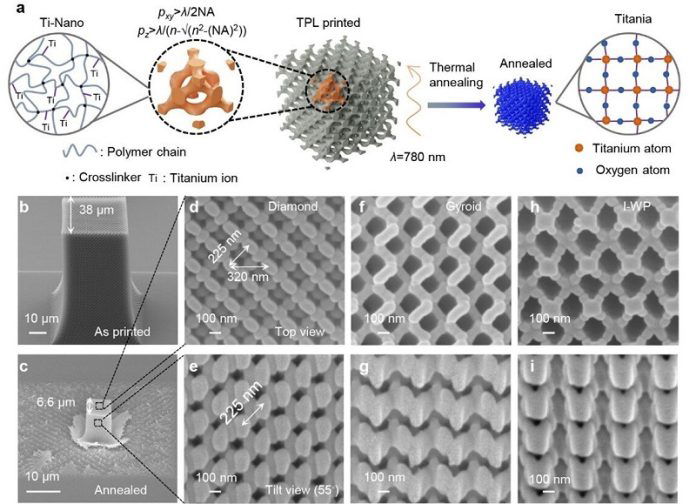
Scientists have achieved a groundbreaking success by developing a special type of material known as 3D photonic crystals, which can completely block light.
These materials could revolutionize fields like telecommunications, sensing, and even quantum technologies.
Photonic crystals are materials with unique internal structures that can control how light passes through them.
They interact with light in ways that make them useful for many advanced technologies.
Natural examples of photonic crystals include opals and some insect shells, which create beautiful colors by interacting with light.
What makes these crystals special is something called a “photonic bandgap.” This means that, even though they are made of clear materials, they can block light at specific wavelengths or from certain directions.
A “complete photonic bandgap” goes even further, blocking light from all directions. Creating such crystals, especially in 3D, has been a major challenge for scientists—until now.
A team of researchers from Singapore and China, led by Professor Joel Yang from the Singapore University of Technology and Design (SUTD), has figured out how to print these 3D photonic crystals that completely block visible light.
Their work was published in the journal Nature Nanotechnology.
This development is a big step forward in controlling light at the nanoscale level, which could lead to exciting advancements in technology.
In the past, 1D and 2D photonic crystals have been used in various applications, but creating 3D versions with a complete photonic bandgap in the visible light spectrum has been extremely difficult.
The problem lies in how precise the structure needs to be in all three dimensions, requiring extremely fine control during the manufacturing process.
The researchers used a technique called two-photon polymerization lithography (TPL), which is often used in 3D printing. Traditional materials used in this method have a low refractive index, meaning they can’t block light in the visible range. To overcome this, the team developed a custom titanium-based resin for their printing process.
Titanium dioxide, commonly known as titania, is an inorganic material with a high refractive index, meaning it can strongly interact with light. It’s already used in everyday items like toothpaste and sunscreen because of its light-scattering properties. In this new research, the team used titania to make the 3D photonic crystals. After printing, they heated the crystals in air, which helped remove organic components and oxidized the titanium, turning it into titania.
The heating process also caused the crystal structures to shrink, making them even smaller and more precise. The resulting structures had incredibly high resolution, with pitches (the distance between layers) as small as 180 nanometers.
The team successfully demonstrated that these tiny structures can block visible light from all directions, confirming the presence of a complete photonic bandgap. This opens up numerous possibilities, including creating materials that can generate specific colors or guide light in precise ways. The process is also customizable, allowing scientists to modify the crystals for specific uses, like adding defects to change how they behave.
This breakthrough could lead to many new developments, as the method can potentially be used to create other materials like glass, ceramics, and metals at the nanoscale. The researchers hope this technique will pave the way for further advances in the field of photonics, offering new opportunities for controlling light in innovative ways.



